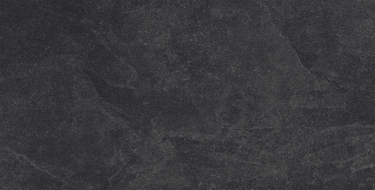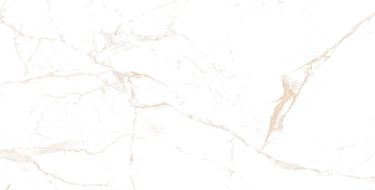
The question of which tile adhesive to choose is asked by everyone planning a renovation. It is very important to select the product according to the type of surface and place of installation. This will ensure a lasting effect. There is a wide range of adhesives available. This guide will introduce the properties of individual adhesives and make it easier to decide on the right product choice.
What Will You Learn from This Article?
For tiling, you need to use a high-quality adhesive with good adhesion. Tiles will attach perfectly to the substrate, won't fall off the wall, and will stably adhere to the floor. From this article, you will learn:
What properties a tile adhesive for wall and floor should have.
What adhesive is worth using for large tiles.
The types of tile adhesives available.
The best adhesive for bathroom tiles.
Which Tile Adhesive — Basic Tips for Purchase
Ceramic tiles are one of the most popular finishing materials in homes and apartments. They are easy to maintain, durable, and provide a versatile room arrangement. Check how to choose tiles for a small bathroom to achieve the best visual effects. With the help of tiles on walls and floors, you can stylishly finish a room.
Although the adhesive is not visible daily, it plays a significant role in the durability of the surface. It's not worth buying this product blindly. A good adhesive will ensure that ceramic tiles do not fall off walls and floors. There are many types of adhesives available. When making the final decision, pay attention to several basic factors:
Whether the tiles will be exposed to long-term moisture and water,
Whether the tiles will be exposed to frequent temperature changes,
Whether the tiles will be exposed to atmospheric factors.
Read on to ensure which tile adhesive will work best in individual rooms in the house and apartment.
The Most Important Properties of Tile Mounting Adhesive
The right adhesive guarantees that tiles will have increased adhesion to the substrate, won't crack, and won't show discoloration on their surface. Keep in mind that some adhesives negatively affect the glaze and complicate installation. A good tile adhesive ensures that the surface is durable and that the material can work well in the room.
Before deciding which adhesive for floor and wall tiles to choose, consider:
The type of surface the tiles will be laid on,
Whether the surface has underfloor heating,
Where the installation will be done, inside or outside the room, on the wall or floor,
Whether the tiles need to be resistant to moisture, water, and temperature changes,
The high flexibility of the adhesive, which translates to its quality and effective vibration damping,
The adhesive setting time,
Tear resistance,
Whether the adhesive is allergy-friendly,
Whether the adhesive has a strong, irritating smell.
There is no single adhesive for all surfaces. This must be understood. Moreover, the preparation must be matched to the size of the tiles and the quality of the substrate. A different adhesive is suitable for absorbent substrates, and another for uneven ones.
Types of Adhesives for Tile Installation
On store shelves, you'll primarily find three types of adhesives:
Adhesives marked with the letter C — these are cement adhesives, very popular. They come in the form of dry mixes that need to be mixed with water in the right proportions before use. Cement preparations are often used in bathrooms with high humidity.
Adhesives marked with the letter D — these are dispersion adhesives for bathroom tiles. They are created based on insoluble synthetic resins mixed with water. They are characterized by high flexibility. They are ready for immediate use, especially on deformable surfaces. Dispersion preparations can be used without problems in humid environments.
Adhesives marked with the letter R — these are adhesives based on reactive resins. They have increased adhesion to the substrate. They are worth using on demanding surfaces as they are of very strong and durable bonding. It's the right product for bathrooms. Available in single or two-component formula.
Tile glue is also divided into classes. Each product has special markings, which are worth knowing before deciding to purchase.
1 — ordinary and standard-setting adhesives.
2 — adhesives with enhanced parameters in terms of bonding.
F — fast-setting adhesives.
T — adhesives with reduced flow.
E — adhesives with extended open time.
S1 - deformable adhesives.
S2 - highly deformable adhesives.
If you're wondering, which bathroom tile adhesive will be the most appropriate, it's worth choosing one of the following types:
Thin-bed tile adhesive — perfect for smooth surfaces. It allows for the preparation of a layer from 2 to 5 mm.
Medium-bed tile adhesive — works very well on uneven walls. It allows for the creation of a layer of about 2 cm.
Thick-bed tile adhesive — this is the adhesive for difficult substrates. It makes bathroom tiles look perfect. Layer thickness can be over 2 cm.

Choose Adhesive According to Substrate Type and Tile Installation Location
Before starting the renovation, calculate the number of tiles for the wall and floor, and also buy the appropriate finishing materials. One of the most important is a good adhesive for exterior and interior tiles. Choose adhesive according to the installation location and substrate type.
To the question, what adhesive for ceramic tiles laid inside the room will be appropriate, the answer is simple: waterproof. It will work perfectly in the kitchen, bathroom, and hallway. The adhesive for frequently used rooms, such as the toilet, should be quick-setting. When choosing adhesive to lay tiles from top to bottom, pay attention to the fact that it has reduced flow. If there is underfloor heating, an elastic compound must be used.
A much higher requirement must be met by adhesive used for tiles laid on terraces or balconies. It must be a product with enhanced frost and water-resistant properties. Additionally, it should be highly deformable, especially if tiles are laid on a large surface.
Another very important aspect when selecting tile adhesives is the substrate type. On cement, cement-lime, gypsum, and lime plasters, wall concrete, use standard, normally set adhesive, or one with reduced flow and extended opening time. If bathroom tiles are being laid on plasterboard, use regular cement adhesive, normally setting.
Renovation can be overwhelming and time-consuming. If you just want to refresh the interior, you might decide on painting the tiles. We show how to do it step by step. Another solution that will save you a lot of rubble and shorten renovation work is laying new bathroom tiles on old tiles. The best adhesive for tiling on tiles is cement or dispersion preparation, necessarily with enhanced adhesion.
What is a Good Tile Adhesive for Bathroom Tiles?
When checking how much the glaze really costs, many people conclude that they want to finish the surface of walls and floors in the bathroom for years. By conducting renovation work professionally right away, you'll save yourself unnecessary tile chiseling for a long time.
The bathroom is a room very exposed to moisture. Luckily, you can now buy a good tile adhesive. The bathroom will thus have a well-prepared floor and strongly attached tiles. For this demanding room, quick-setting adhesives or those with extended open time are highly recommended. It's also worth paying attention to tile adhesive for ceramic tiles with S1 and S2 markings. The best glue for glaze adapts to current technical needs and conditions prevailing in the room.
Which Adhesive for Large Format Tiles?
The popular size of tiles is 120 × 60 cm. Such large-format tiles are available in Mexen's offer. When choosing adhesive for large format tiles, opt for preparation of class C2TES1 or C2TES2. It's suitable for use on both floors and walls. During tile installation, remember to apply the adhesive evenly. If you use the so-called spot method, the material will be damaged by detachment. In the case of large format tiles, it's very important that adhesive preparations completely fill the entire surface of the tiles.
You now know the basics of which adhesive for 120x60 cm gres is worth applying. Keep in mind that the best adhesive for large-format tiles has high flexibility. The larger the tiles, the more prone to tension caused by substrate movement. Adhesive with low flexibility will begin to crumble over time.
Regarding the thickness of the layer to be applied on large-format tiles, according to recommendations, it's from 5 to 10 mm. However, always remember to pay attention to the type and quality of the substrate. If it's perfectly smooth, a very thin layer of adhesive can be applied.
Information to Help Decide Which Adhesive for Porcelain Tiles is Worth Choosing
Even the most expensive and beautiful tiles won't adhere to the wall or floor without high quality, properly chosen adhesive. Whether you're looking for adhesive for tiling over tiles or adhesive for shower tiles, always pay attention to the properties and quality of the product.
To buy the best adhesive for porcelain, check:
The type of substrate on which they will be laid,
The leveling of the surface,
Installation location and the conditions prevailing in it,
The conditions that will affect the tiles: bathroom, internal, external, floor and wall tiles,
The size of the wall and floor tiles.























